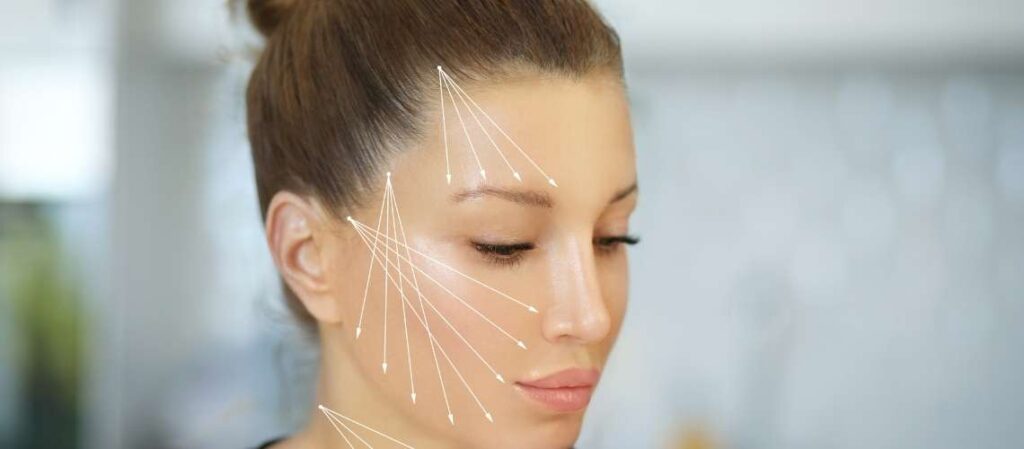Facial thread lift is a relatively new and minimally invasive procedure quickly becoming popular among many people. It promises to provide an effective way to correct sagging skin without the cost and recovery time associated with a traditional facelift. But, like any cosmetic treatment, some potential risks and drawbacks should be considered before undergoing the procedure. This article will explore the potential face-threading disadvantages to help you make an informed decision about whether this type of treatment is right for you.
What age should you get a thread lift?
Thread lifts are quickly becoming one of the most popular forms of cosmetic surgery available. They offer a minimally invasive way to reduce signs of aging and rejuvenate skin, but how do you know when the right time to get a thread lift is?
The answer depends on your lifestyle and personal preferences, but some general guidelines can help determine if now is the best time to get a thread lift. Generally speaking, those in their late 30s or early 40s may start seeing benefits from a thread lift as it can help reverse age-related facial laxity that begins to occur around this time. Thread lifts can also benefit those in their late 40s or 50s who have recently noticed sagging skin due to weight loss or natural aging processes.
How often should you do thread lift?
Thread lifts are a minimally invasive procedure to help reduce the signs of aging. But how often do you need to undergo this treatment?
Thread lift procedures typically last anywhere from one year to 18 months, depending on the individual’s age, skin type, and lifestyle. To ensure optimum results, it is recommended that patients get thread lifts every 12-18 months as part of their anti-aging regimen. The initial thread lift can be done earlier if needed for more dramatic results, but wait times for follow-up treatments should be 18 months to maintain the desired results.
It’s important to note that a thread lift is a temporary solution and requires maintenance over time. Patients should always discuss their needs and concerns with their doctor before undergoing any cosmetic procedure or making changes to their skincare routine.
Is thread lift better than Botox?
The thread lift has recently gained popularity as an alternative to more traditional cosmetic surgery procedures, such as Botox. It is a non-invasive procedure that involves inserting special threads into the skin to create a lifting and tightening effect. But is it better than Botox?
To answer this question, it’s important to understand how each procedure works. Botox is a type of injectable treatment used to reduce the appearance of wrinkles by temporarily paralyzing underlying facial muscles. Thread lift involves inserting tiny sutures under the skin, which are tightened with small instruments and can provide moderate lifting and contouring benefits over time.
Both procedures have their advantages and disadvantages. While Botox provides quick results with minimal downtime, its effects are only temporary, usually lasting three to four months before needing additional maintenance treatments.
PDO thread lift pros and cons
PDO thread lifting is a promising skin care treatment that can greatly change your appearance, making it younger-looking. Let’s look at the main facial thread lift pros and cons to help you decide whether or not it is suitable for you:
Pros
1. Non-surgical and minimally invasive technique.
2. Little to no downtime is required.
3. Results are immediately visible after treatment.
4. Improved skin laxity, tone, and texture post-treatment with little scarring or discomfort.
5. Prolonged collagen production benefits can last up to 2 years with proper maintenance and care of the area treated.
Cons
1. Some patients may experience bruising or swelling post-treatment, requiring additional treatments for desired results.
2. It is unsuitable for individuals with a lot of excess skin or deep wrinkles that need to be treated, as it only offers subtle tightening effects on the skin’s surface by manipulating the deeper layers of tissue beneath it.
3. The cost associated with this procedure can be relatively high, depending on the size of the area being treated and the number of threads used in each treatment session.
What are the most significant thread lift facelift problems?
Thread lifts, also known as suture lifts, are a unique facelift form that uses tiny threads to pull back and tighten the skin on the face. This lift is becoming increasingly popular for those who want an alternative to traditional surgical facelifts. However, like any other cosmetic procedure, thread lifts come with some risks and potential problems.
The most significant thread lift facelift problems include nerve damage and infection. Occasionally, the threads can become displaced or break apart due to poor placement or technique during the procedure. Additionally, a patient may experience bruising and swelling after the process, lasting anywhere from one week to several months. If these complications happen, they should be reported to a medical professional immediately, as they can be potentially serious if left untreated.
Can thread lifts cause nerve damage?
Thread lifts, a minimally invasive cosmetic procedure that reduces the signs of aging, have become increasingly popular in recent years. On the other hand, many patients are concerned about the potential side effects of the treatment, including nerve damage.
Nerve damage is a serious condition that can lead to long-term pain and discomfort in patients. Fortunately, thread lifts are rarely associated with this type of injury. Occasionally, thread lift-related nerve damage is caused by incorrect or improper technique during the procedure. For example, if too much tension is applied to the threads or inserted too deeply into tissue near nerves, it may lead to nerve compression and subsequent injury.
The best way to avoid thread lift-related nerve damage is by selecting a qualified healthcare professional with extensive experience performing this type of procedure and using appropriate techniques to ensure patient safety.

